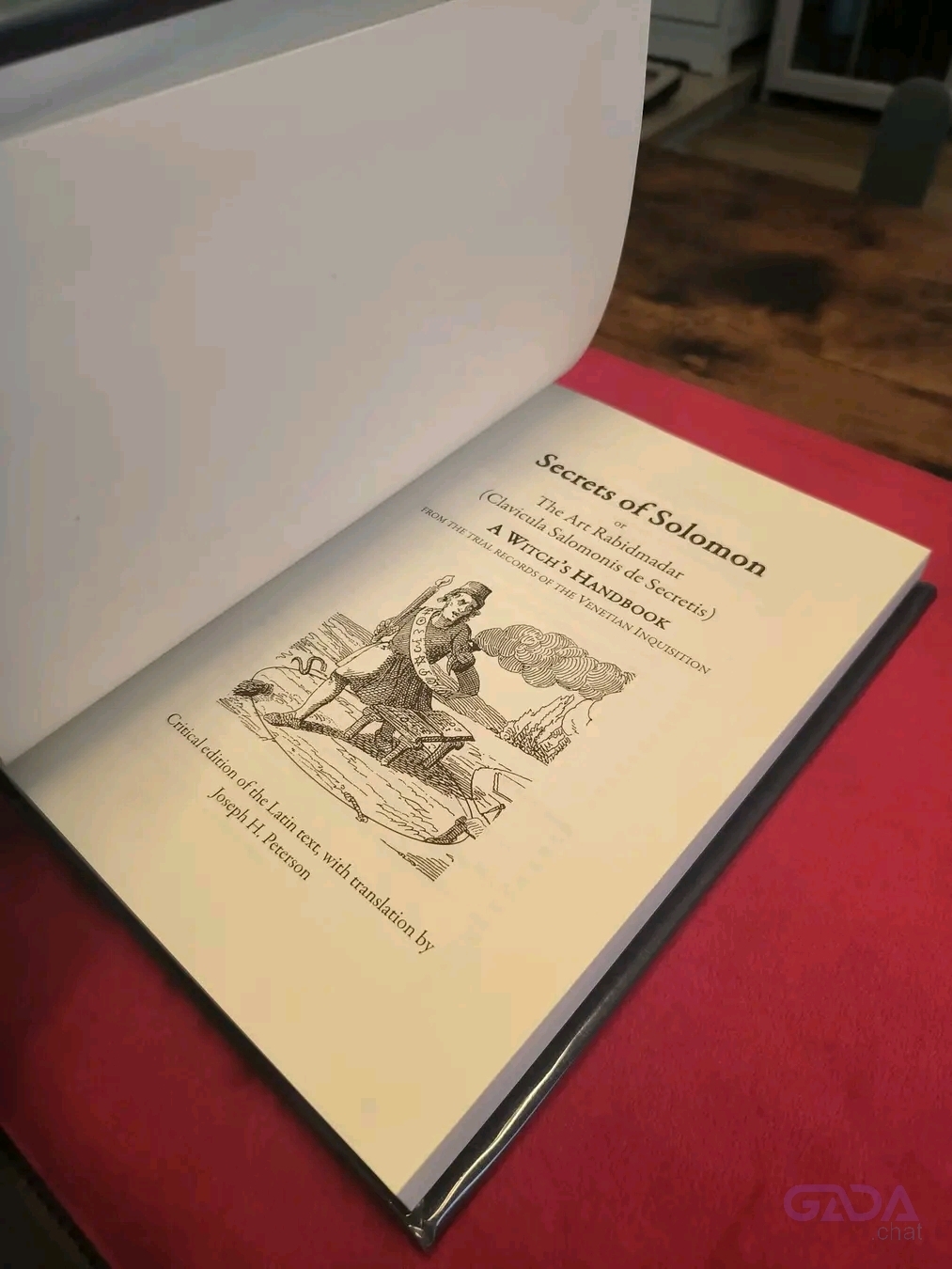The Secrets of Solomon: A Witch’s Handbook from the Venetian Inquisition
This 2018 edition (edited and translated by Joseph H. Peterson) presents The Secrets of Solomon, a grimoire said to have been confiscated by the Venetian Inquisition in 1636. Peterson describes it as a collection of “secret techniques for dealing with the more dangerous spirits or daemons,” compiled from trial records and published in English for the first time.
In 16th–18th century Venice the Holy Office (Inquisizione di Stato) prosecuted heresy, superstition and witchcraft under the joint authority of the Venetian Republic and the Church. The Inquisition was active in cases of “prohibited books, superstition, and witchcraft”. In Venice’s cosmopolitan society, magical beliefs persisted even under ecclesiastical scrutiny.
The book’s central theme is infernal magic. It opens with three chief spirits (daemons) and their many servants, a hierarchy explicitly described as “chthonic and possibly infernal” beings rather than the airy spirits of classical Solomonic lore. In this sense it is seen as a precursor to the later Grimorium Verum, providing “variants on the spirit lists and procedures” that appear there.
Another major section treats the spirits of the seven celestial spheres and the four elements. These high spirits are served by mysterious entities called “Amalthai,” and elaborate rituals are given for invoking each planetary angel and elemental daemon. Peterson notes that this part includes “a long series of instructions for approaching the greater spirits through ritual, along with a set of talismans to be employed toward various ends”.
Unlike many grimoires attributed to Solomon, this one comes from real Inquisition trial documents. It offers a rare snapshot of what actual 17th-century Venetian occult practitioners recorded as their magical knowledge.
This 2018 edition (edited and translated by Joseph H. Peterson) presents The Secrets of Solomon, a grimoire said to have been confiscated by the Venetian Inquisition in 1636. Peterson describes it as a collection of “secret techniques for dealing with the more dangerous spirits or daemons,” compiled from trial records and published in English for the first time.
In 16th–18th century Venice the Holy Office (Inquisizione di Stato) prosecuted heresy, superstition and witchcraft under the joint authority of the Venetian Republic and the Church. The Inquisition was active in cases of “prohibited books, superstition, and witchcraft”. In Venice’s cosmopolitan society, magical beliefs persisted even under ecclesiastical scrutiny.
The book’s central theme is infernal magic. It opens with three chief spirits (daemons) and their many servants, a hierarchy explicitly described as “chthonic and possibly infernal” beings rather than the airy spirits of classical Solomonic lore. In this sense it is seen as a precursor to the later Grimorium Verum, providing “variants on the spirit lists and procedures” that appear there.
Another major section treats the spirits of the seven celestial spheres and the four elements. These high spirits are served by mysterious entities called “Amalthai,” and elaborate rituals are given for invoking each planetary angel and elemental daemon. Peterson notes that this part includes “a long series of instructions for approaching the greater spirits through ritual, along with a set of talismans to be employed toward various ends”.
Unlike many grimoires attributed to Solomon, this one comes from real Inquisition trial documents. It offers a rare snapshot of what actual 17th-century Venetian occult practitioners recorded as their magical knowledge.
The Secrets of Solomon: A Witch’s Handbook from the Venetian Inquisition
This 2018 edition (edited and translated by Joseph H. Peterson) presents The Secrets of Solomon, a grimoire said to have been confiscated by the Venetian Inquisition in 1636. Peterson describes it as a collection of “secret techniques for dealing with the more dangerous spirits or daemons,” compiled from trial records and published in English for the first time.
In 16th–18th century Venice the Holy Office (Inquisizione di Stato) prosecuted heresy, superstition and witchcraft under the joint authority of the Venetian Republic and the Church. The Inquisition was active in cases of “prohibited books, superstition, and witchcraft”. In Venice’s cosmopolitan society, magical beliefs persisted even under ecclesiastical scrutiny.
The book’s central theme is infernal magic. It opens with three chief spirits (daemons) and their many servants, a hierarchy explicitly described as “chthonic and possibly infernal” beings rather than the airy spirits of classical Solomonic lore. In this sense it is seen as a precursor to the later Grimorium Verum, providing “variants on the spirit lists and procedures” that appear there.
Another major section treats the spirits of the seven celestial spheres and the four elements. These high spirits are served by mysterious entities called “Amalthai,” and elaborate rituals are given for invoking each planetary angel and elemental daemon. Peterson notes that this part includes “a long series of instructions for approaching the greater spirits through ritual, along with a set of talismans to be employed toward various ends”.
Unlike many grimoires attributed to Solomon, this one comes from real Inquisition trial documents. It offers a rare snapshot of what actual 17th-century Venetian occult practitioners recorded as their magical knowledge.





